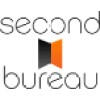Abstract:
Near Field Communication (NFC) and Radio Frequency Identification (RFID) technologies are pivotal in enhancing connectivity and streamlining processes across various industries. NFC, enabling two-way communication between devices over short distances, empowers mobile payments and data transfers with a simple tap. RFID, on the other hand, offers one-way communication from a tag to a reader, making it indispensable for tracking assets, managing inventories, and automating checkout processes. Both technologies are revolutionizing the way we exchange information, offering secure, efficient, and rapid data sharing solutions. Key advancements include improved security protocols to safeguard sensitive information and the integration of these technologies into a wider range of devices and applications. This article explores how NFC and RFID are contributing to smarter cities, more efficient businesses, and enhanced consumer experiences, highlighting the ongoing innovations and the potential future developments in this area.
NFC and RFID: enhancing connectivity and streamlining processes
In our digitally connected world, Near Field Communication (NFC) and Radio Frequency Identification (RFID) have emerged as pivotal technologies that significantly enhance connectivity and streamline operations. While both NFC and RFID facilitate wireless communication, they do so in distinct ways, each with unique capabilities and applications.
NFC enables two-way communication between devices that are in close proximity, typically within a few centimeters. This makes it ideal for applications requiring secure, short-range interactions. Some common uses of NFC include contactless payment systems, access control, and data exchange between electronic devices. With its ability to support bidirectional communication, NFC offers a versatile solution for many modern needs.
On the other hand, RFID technology excels in one-way communication over varying distances, from a few centimeters to several meters. RFID systems comprise a tag and a reader; the reader emits a signal that powers the tag, allowing it to transmit its information back to the reader. This makes RFID suitable for tasks such as inventory management, asset tracking, and automated identification. The ability to read multiple tags simultaneously and over longer distances sets RFID apart as a powerful tool for numerous industries.
Both technologies have revolutionized multiple sectors by improving efficiency and accuracy. In retail, RFID tags simplify stock management and reduce theft, while NFC enhances the shopping experience by enabling quick and secure payments. In healthcare, RFID tracks medical equipment and supplies, ensuring that critical items are always available. Meanwhile, NFC aids patient care by allowing seamless data exchange between devices. Transportation, logistics, and even entertainment have also benefited greatly from these technologies, demonstrating their broad potential.
Understanding the fundamental differences and capabilities of NFC and RFID sets the stage for a more in-depth look at their respective applications. With each technology continuing to evolve, their impact on enhancing connectivity and improving operational efficiency remains profound.
NFC technology and its applications
Near Field Communication (NFC) technology plays a crucial role in the way modern devices interact and exchange information. By facilitating two-way communication between devices over short distances, NFC creates a seamless and convenient interface for various transactions and data transfers.
Enabling secure and swift mobile payments
One of the most prominent applications of NFC technology is in mobile payment systems. Using NFC, consumers can make payments by simply tapping their smartphones or NFC-enabled cards against a reader at checkout points. This simple gesture replaces the need for cash or card swipes, making transactions faster and more secure. Popular services such as Apple Pay, Google Wallet, and Samsung Pay rely on NFC to provide users with a quick and convenient payment method.
Effortless data exchange and device pairing
Beyond payments, NFC enables simple and efficient data exchange between electronic devices. For instance, sharing contact information, photos, or documents between smartphones can be as easy as bringing the devices close together and tapping a confirmation. Additionally, NFC facilitates the pairing of Bluetooth devices, such as wireless headphones or speakers, streamlining the process to a mere tap instead of lengthy setup procedures.
Enhanced security protocols
Security is a critical aspect of NFC technology. Given the sensitive nature of transactions, NFC employs robust encryption protocols to ensure data protection. The technology supports cryptographic authentication and secure channels, reducing the risk of data interception. For example, when making an NFC-based payment, the device generates a unique transaction code, adding an extra layer of security to each interaction.
Expanding to various devices and applications
The versatility of NFC extends beyond smartphones and tablets. This technology is now embedded in a broader range of devices and applications, enhancing user experiences across different contexts. Smartwatches and fitness trackers utilize NFC for contactless payments and quick access to information. Smart home devices, such as locks and thermostats, can also be controlled effortlessly using NFC-enabled phones.
Examples of NFC in everyday scenarios
- Public transportation: Many cities around the world have adopted NFC-enabled ticketing systems, allowing travelers to tap their cards or phones to pay for rides, thereby improving the efficiency of public transport.
- Access control: NFC technology is widely used in access systems, where employees can gain entry to secured buildings or rooms by tapping their cards against an NFC reader.
- Retail experiences: Retailers are leveraging NFC to enhance shopping experiences. Smart shelves equipped with NFC tags notify staff about stock levels, helping maintain optimal inventory levels.
- Interactive advertising: NFC tags placed on advertisements in public spaces enable users to tap their phones for more information or promotional content, thereby creating interactive marketing campaigns.
These examples illustrate how integrated NFC technology is becoming in daily life, simplifying and securing various routines. NFC's capacity to provide fast, secure interactions over short ranges makes it a versatile tool in the ever-growing landscape of connected devices and smart applications.
RFID technology and its applications
Radio Frequency Identification (RFID) technology plays a crucial role in modern asset tracking and management systems by enabling seamless one-way communication from a tag to a reader. Unlike NFC, which supports two-way interactions, RFID's primary function lies in its ability to transmit data over varying distances, making it an invaluable tool for numerous applications.
Efficient asset tracking
One of the key applications of RFID is in asset tracking, where it significantly enhances the accuracy and efficiency of monitoring and managing physical assets. RFID tags, which can be attached to items, continuously send information to RFID readers, allowing for real-time tracking. This capability is especially beneficial in large-scale operations such as warehouses and logistics centers, where it reduces the time and effort needed to locate inventory. For instance, a study by Motorola Solutions indicated that retailers using RFID technology experienced a 99% inventory accuracy rate, compared to 70% with traditional barcoding methods.
Revolutionizing inventory management
In the realm of inventory management, RFID technology presents a streamlined solution to common challenges like stock discrepancies and theft. By deploying RFID tags on products, businesses can perform faster and more accurate inventory counts. The technology allows for the simultaneous scanning of multiple items, drastically reducing manual labor and human errors. As a result, companies can optimize their stock levels, cut down on losses, and enhance overall efficiency. Major retailers like Zara and Walmart have implemented RFID to improve their inventory systems, resulting in better stock visibility and reduced out-of-stock instances.
Automating the checkout process
Another impactful application of RFID technology is in the automation of checkout processes. By integrating RFID tags into products, stores can create a seamless and efficient shopping experience. Customers can simply walk through RFID-enabled checkouts without the need for manual scanning of each item. This not only speeds up the transaction process but also minimizes queues, providing a better customer experience. Amazon Go stores are a prime example of this innovation, where the entire shopping process is automated using RFID and other advanced technologies.
Real-world examples and statistics
- Healthcare: Hospitals use RFID to track medical equipment and supplies, ensuring that critical items are always available and in the right location. This reduces the time staff spends searching for equipment, thereby increasing efficiency and improving patient care.
- Manufacturing: In manufacturing, RFID tags monitor the flow of materials and finished products. This enables manufacturers to keep tight control over their production lines, reducing waste and optimizing throughput.
- Supply chain logistics: Companies like Maersk and FedEx implement RFID to monitor the movement of shipments in real-time. The ability to track goods throughout the supply chain enhances transparency, reduces losses, and improves delivery accuracy.
- Libraries: Many libraries have adopted RFID to streamline book borrowing and returns. RFID tags on books allow for quick check-outs and returns, freeing up library staff to assist patrons with other services.
The application of RFID technology extends beyond these industries, offering immense utility in numerous other fields. Its ability to provide accurate, efficient, and real-time data collection transforms operations, paving the way for smarter and more connected workflows.
In essence, RFID technology contributes significantly to improving operational efficiency across different sectors. Its adaptability and wide-ranging applications make it an indispensable tool in modern asset and inventory management, leading to enhanced performance and profitability for businesses.
You might be interested by these articles:
- IoT Sensor Networks Impact
- NFC and RFID Integration Innovations
- Eco-Friendly Tech: How NFC and RFID Drive Sustainability





